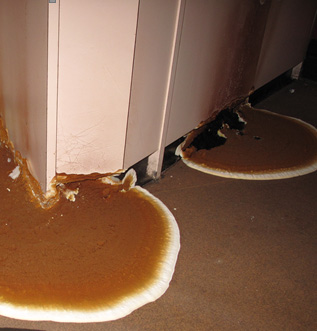Identifying and solving building problems environmentally without the use of chemicals
+44 (0) 1908 266522
Timber Decay Survey
Fungal Timber Decay Inspection & Treatment

Dry Rot (Serpula lacrymans) and Wet Rot (Coniophora puteana etc.) are the most common forms of decay in buildings in the United Kingdom.
Most rot requires high moisture levels in order to thrive and propagate. Rots break down timber elements in buildings, particularly in areas where there is poor ventilation and high humidity.
The chemical constituents forming the timber are broken down by the metabolism of the fungi, reducing the strength of the timber until it is structurally compromised; for instance, floor joists may be decayed to the point of collapse.
Reliance is often placed on the use of toxic chemicals to eradicate the fungi. These chemicals are environmentally damaging and may have serious long-term health implications for the occupants of the building.
Chemical treatment in most circumstances is extremely expensive, because it is usually necessary to carry out extensive exposure work in order to apply the chemicals, followed by restoration. It may be ineffective in the long term if the root cause is not addressed, and in many cases it is simply unnecessary.
Independent advice on decay
Moisture is essential for fungi to thrive in buildings. By controlling moisture and humidity, fungi can be managed within buildings. Heating, ventilation, and good building maintenance will prevent fungal decay forming and can also be used for the control and eradication of existing decay.
EBS Ltd provides independent advice on decay in buildings and has no vested interests in selling chemical treatments or carrying out building work.
Want to find out more?
For a friendly no obligation chat on this and any of our other services, please give us a call on 01908 266522 or email us on ebs@ebssurvey.co.uk. We'll help you find the right solution to your building problems.

